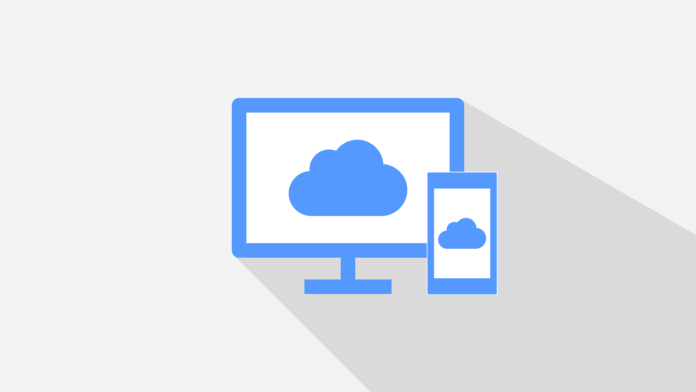In this post, I will show you the advantages and limitations of Object Storage.
The majority of today’s communications data on the World Wide Web is unstructured. Nevertheless, only a few industry specialists are familiar with object-based storage technology.
Many industry executives remain skeptical about the overall business value of object-based storage. So, what exactly is object-based storage? Are they truly suitable for business? Continue reading to learn more about it.
Table of Contents
Object-based Storage Defined
Object-based storage – otherwise known as object storage – is a technological solution for storing unstructured computer data. As the name implies, it manages large volumes of wide-ranging data and handles them as “objects” or units.
Within an object-based storage, the structureless data, such as emails, web pages, sensor data, health records, photos, audio files, and videos, resides within a flat filesystem or data environment typically referred to as a storage pool.
How Object-based Storage Works
In an object-based storage architecture, an “object” comprises the actual data blocks that belong to a file, along with the file’s associated metadata and a universally unique identifier (UUID) or globally unique identifier (GUID).
Object-based storage systems will refer to the UUID and metadata – which encompasses details on permissions and policies – when you try to access data, so you can search for the object you require.
In addition, object-based storage allows you to append some context for data analytics, among other purposes, through metadata customization.
Use Cases of Object-based Storage
A prominent use case for object-based storage is server backup. It involves off-site, large-scale file transfer and storage of certain files as unstructured data on a remote “cloud” server.
Because cloud object-based storage enables backup resilience and accessibility, it can be particularly useful during disaster recovery attempts.
Another effective use-case scenario is the application of object-based storage on big data analytics, which includes artificial intelligence (AI), computational genomics, and the Internet of Things (IoT).
The “big data” umbrella essentially consists of routinely accessing massive unstructured data volumes for later analysis; therefore, object-based storage will come in handy in such cases.
READ ALSO: Digital Flipbooks Review: Are Interactive Documents Worth the Hype?
Object-based Storage: Benefits and Disadvantages
Due to the virtually limitless nature of object-based storage, it eliminates the need for complicated hierarchical data organization, such as directories and folders.
However, object-based storage has its share of disadvantages as well, including the need to completely rewrite an entire object to modify it. This makes object-based storage unsuitable for constantly evolving, dynamic data.
More importantly, go over the following benefits and drawbacks to better understand whether you should choose object-based storage and why.
The Benefits
1. Cloud Compatibility
Perhaps one of the biggest pluses of object-based storage is its impressive compatibility with cloud-based environments offering multiple-tenant storage-as-a-service.
Such co-existing technologies enable multiple corporations or company departments to share a single storage repository, with each entity having access to a distinct portion of the storage space.
2. Scalability
A standard object-based storage technology features scalability that surprisingly transcends the exabyte metric unit compared to other storage architectures with their respective limitations.
File storage, for example, can accommodate millions of files until it reaches a certain threshold or ceiling.
With object-based storage, you can effortlessly scale out its flat data environment or filesystem architecture because you no longer have to deal with the capacity limitations found in block or file storage.
3. Robustness
Object-based storage is guaranteed to be robust due to its automatic data replication and storage capabilities across numerous devices and geographical regions, thus ensuring protection from sudden outages that could lead to data loss.
Additionally, it completely supports the disaster recovery efforts of large corporations.
In short, object-based storage is a resilient backup solution that assures data accessibility when needed.
4. Lessened Complexity
A directory system, for instance, is not viable when you deal with large volumes of structureless data individually.
Luckily, object-based storage does not have hierarchical systems like directories or folders, so using such technology to retrieve data becomes less complicated.
Furthermore, there is a reduced likelihood of performance delays, allowing for easier management of large quantities of unstructured data.
5. Faster Data Retrieval
File retrieval via object-based storage becomes faster because you don’t have to see the specific location, thanks to the absence of complex trees and partitions.
6. Configurable Metadata
A file system has metadata that contains only basic details like the file creation date and time and the owner of that file.
With object-based storage technology, though, you are given the capacity to modify the metadata related to that file.
Object-based storage encourages users to add and configure several metadata tags as needed for a more efficient object location.
For example, from a healthcare perspective, an X-ray may contain information regarding a patient’s age, height, weight, and the type of injury they sustained, among other details.
7. Reduced Cost
In some cases, purchasing an object-based storage technology can be more cost-effective than expanding standard file systems or adding new ones.
Most object-based storage services employ a pay-as-you-go pricing scheme. As a result, the pricing incurs no capital investment or upfront costs.
Moreover, you only have to pay a fee for the monthly subscription, which covers a determined amount of bandwidth usage, data retrieval, application programming interface (API) transactions, and, most importantly, storage capacity.
The Disadvantages
1. High Latency
Object-based storage architecture is not advisable – as far as backing traditional databases is concerned – because of its high latency.
2. Writing an Entire Object as a Requirement
Altering only a single piece of data via object-based storage has several implications for performance.
On the one hand, when you’re on a file system, you can conveniently append a single line toward the end of a given log file.
On the other hand, when on an object-based storage system, you should retrieve an object, append the new line, and write that entire object again.
The painful reality that you must write back an entire object makes object-based storage less ideal concerning constantly changing dynamic data.
3. Object Store Access Issues
Most operating systems are not fully capable of seamlessly mounting an object store. Although some adapters and clients can help, using or browsing a single object store is generally more complicated than when you use a file browser and navigate through multiple directories.
Conclusion
With the increasing complexity of preserving such information due to milestones in technological innovations and predicted limitations in existing data storage technologies, large enterprises will probably face some challenges in storing and managing a staggering amount of data.
Fortunately, object-based storage is well-equipped to address these hurdles.
INTERESTING POSTS
- 6 Most Common Web Security Vulnerabilities (And How To Tackle Them)
- Increase The Storage Capacity Of Your Mac With These Tested Tips
- What Is Zero Trust Architecture All About?
- Free VPN vs Premium VPN – Which one should I go for?
- How To Keep Your Cloud Storage Safe And Secure
- How to Take Your First Step into Cybersecurity
- 5 Smart Software Choices Every Business Should Make
About the Author:
John Raymond is a cybersecurity content writer, with over 5 years of experience in the technology industry. He is passionate about staying up-to-date with the latest trends and developments in the field of cybersecurity, and is an avid researcher and writer. He has written numerous articles on topics of cybersecurity, privacy, and digital security, and is committed to providing valuable and helpful information to the public.










